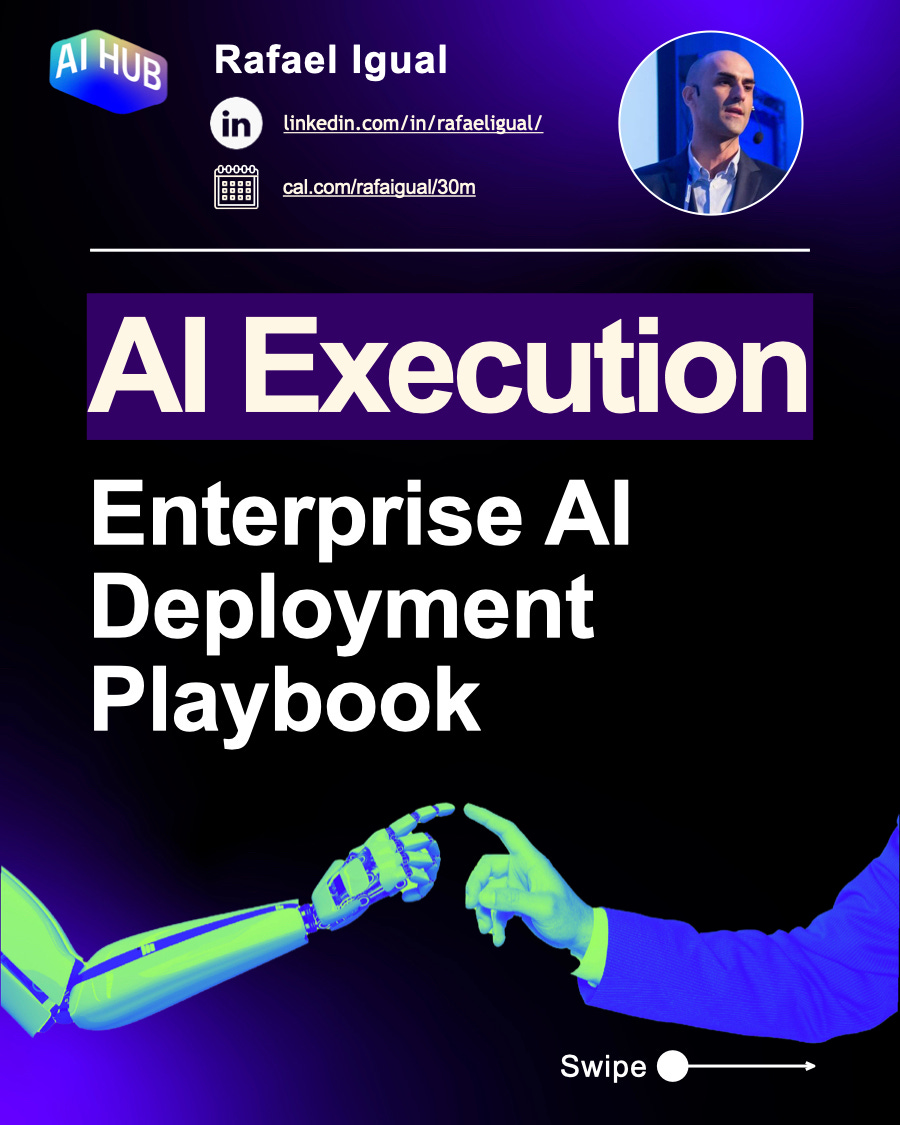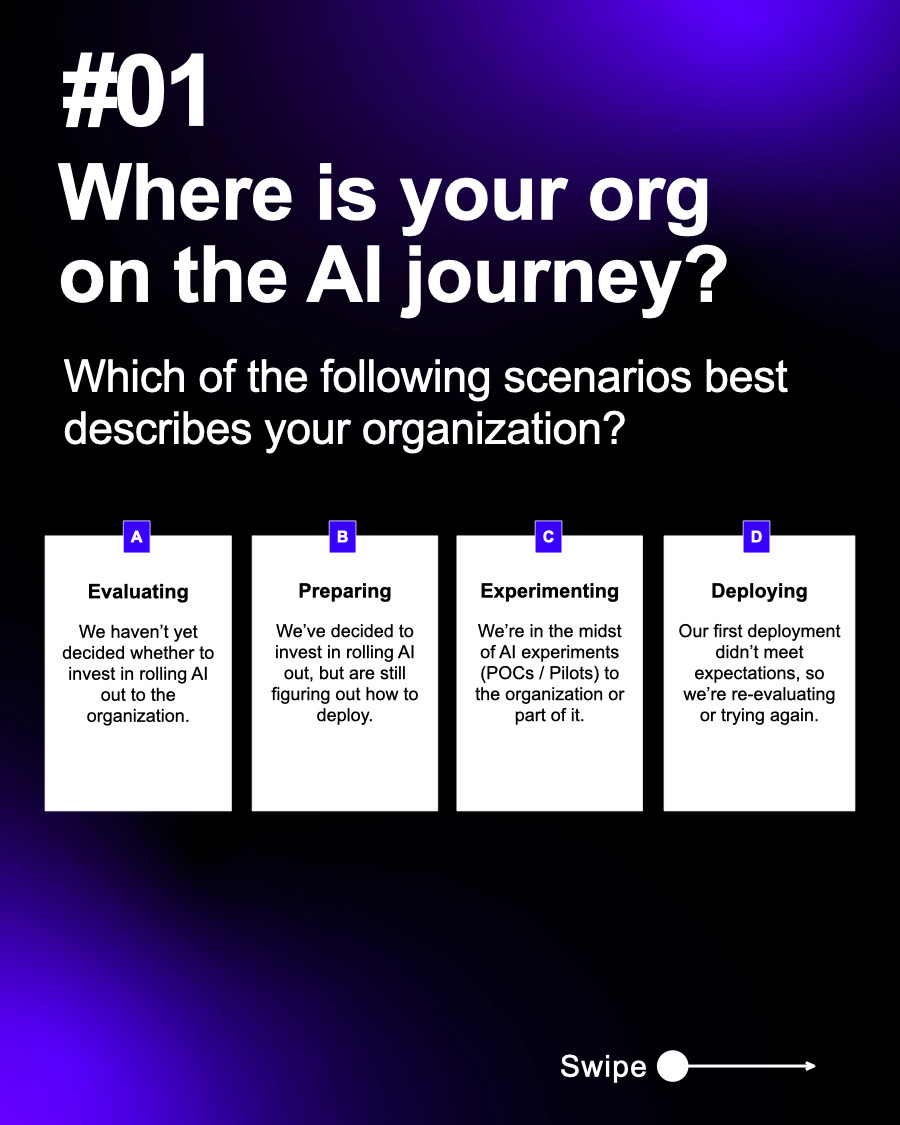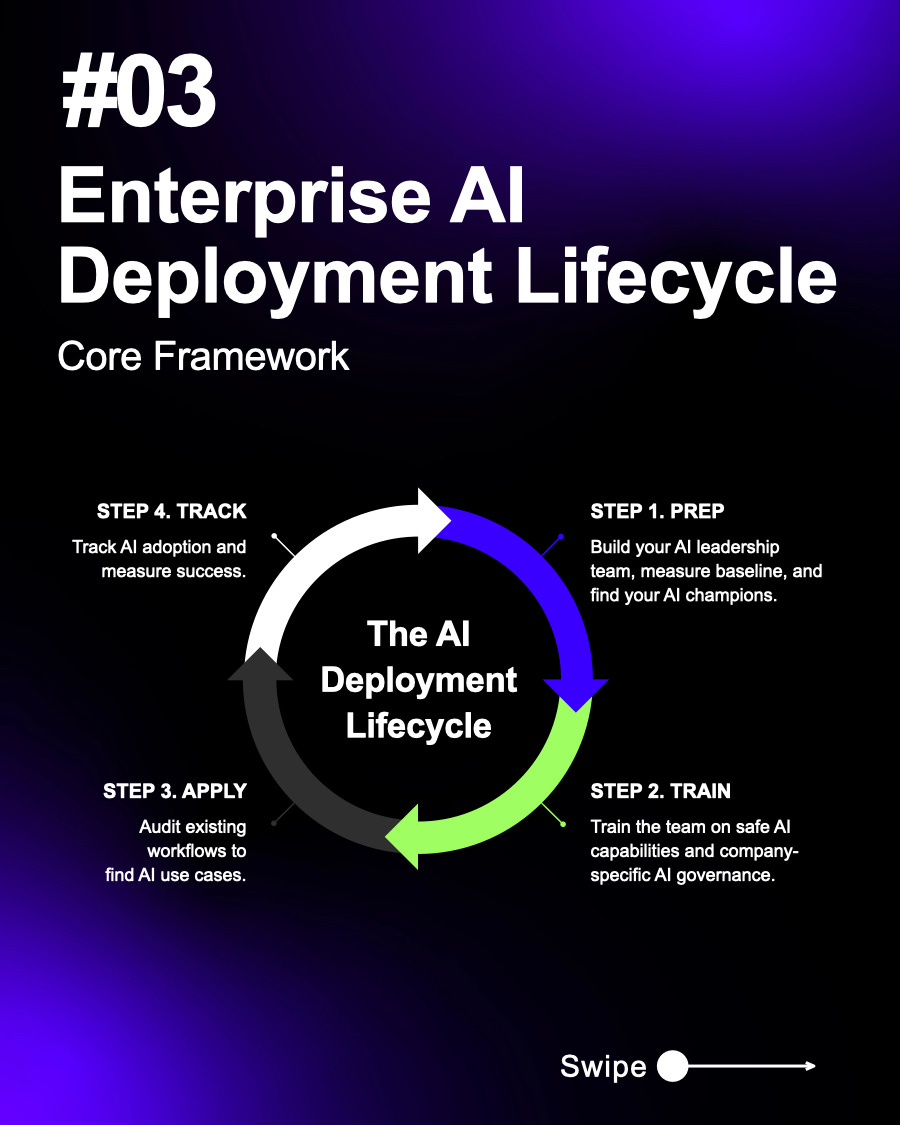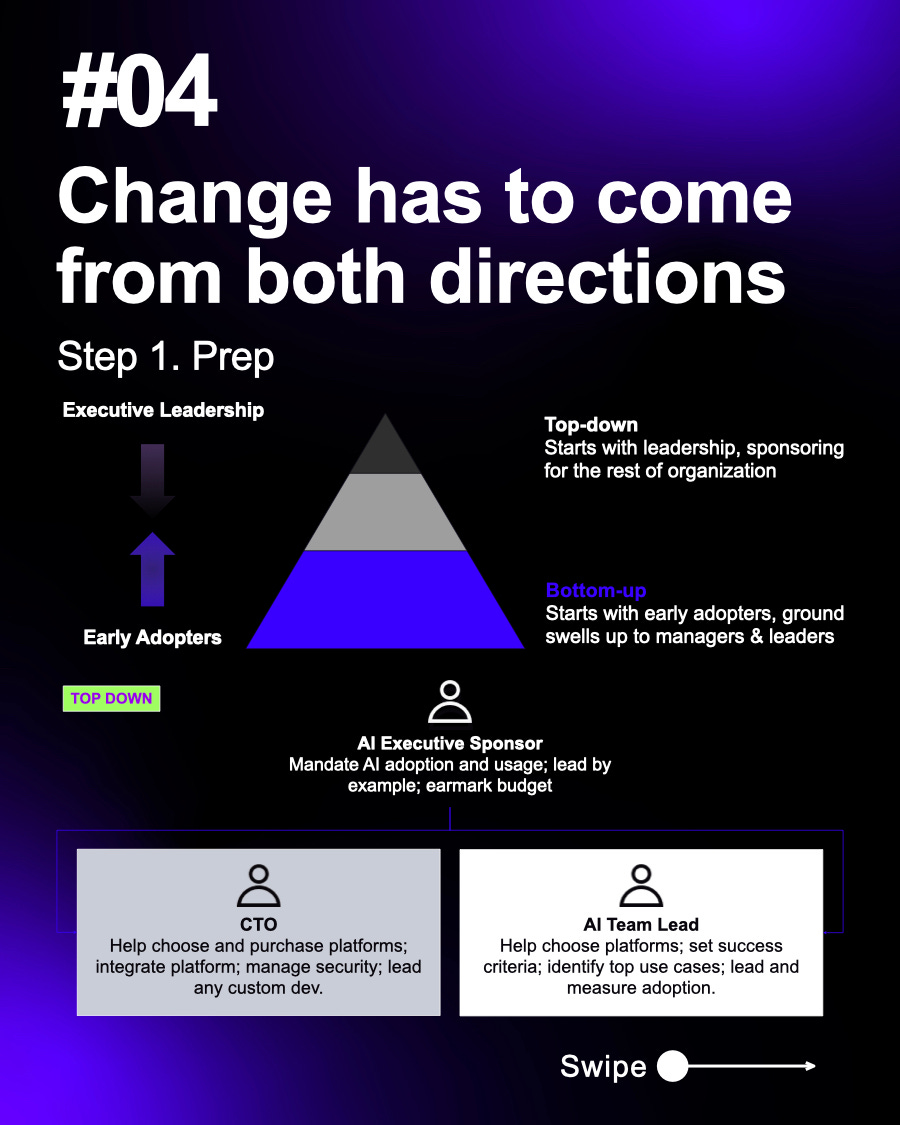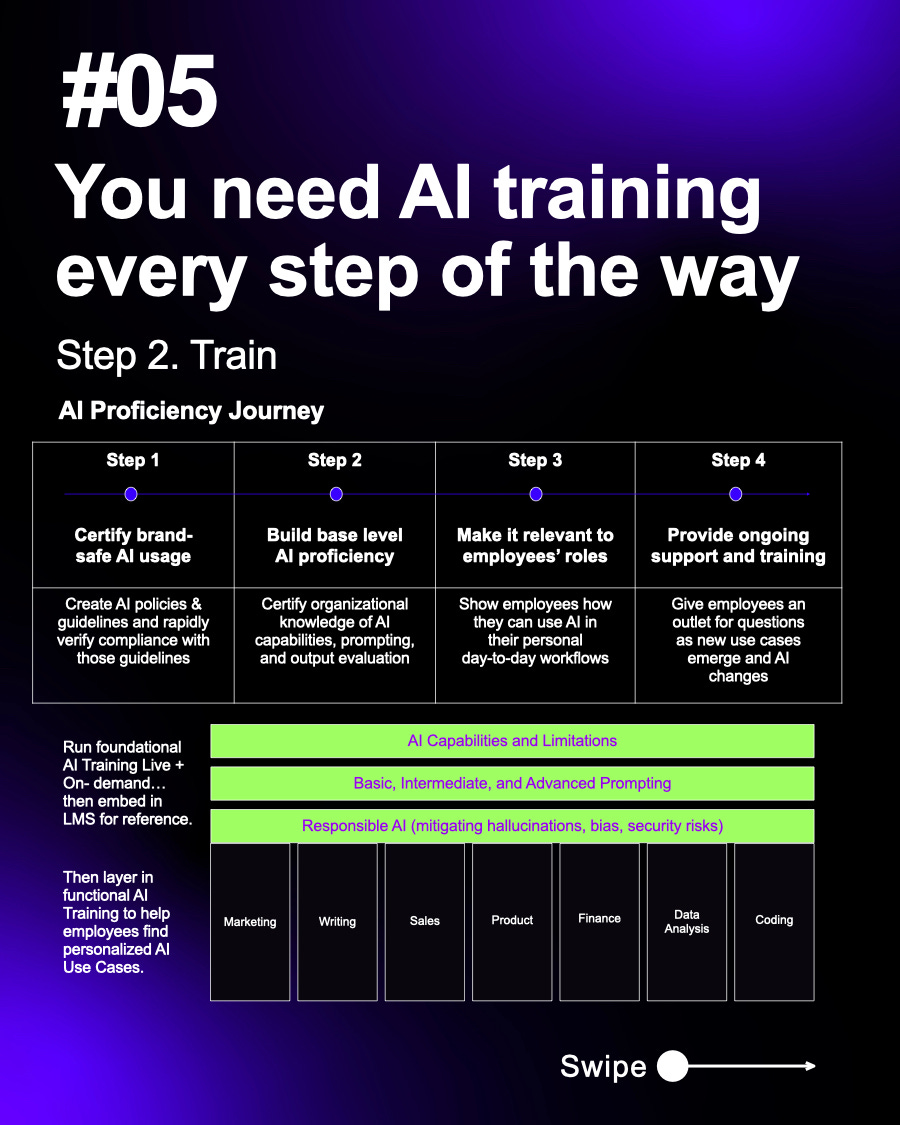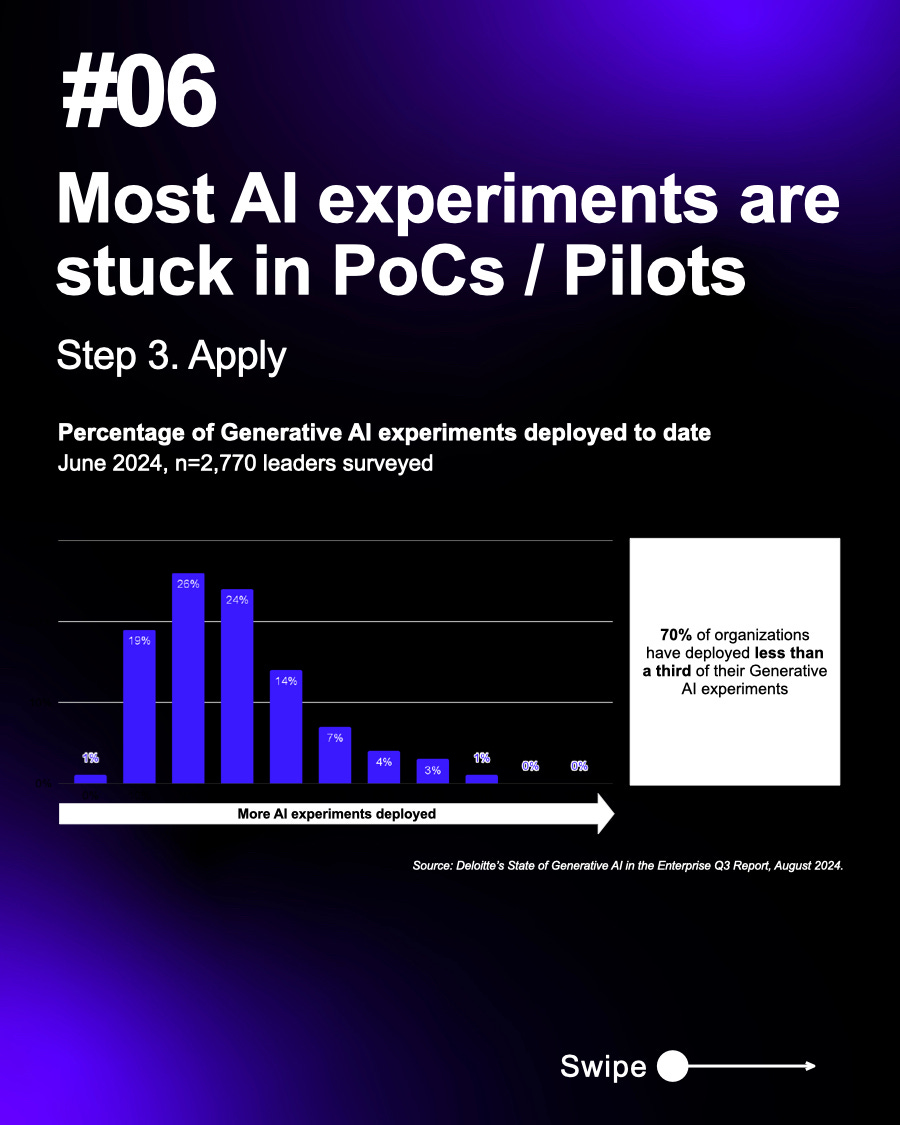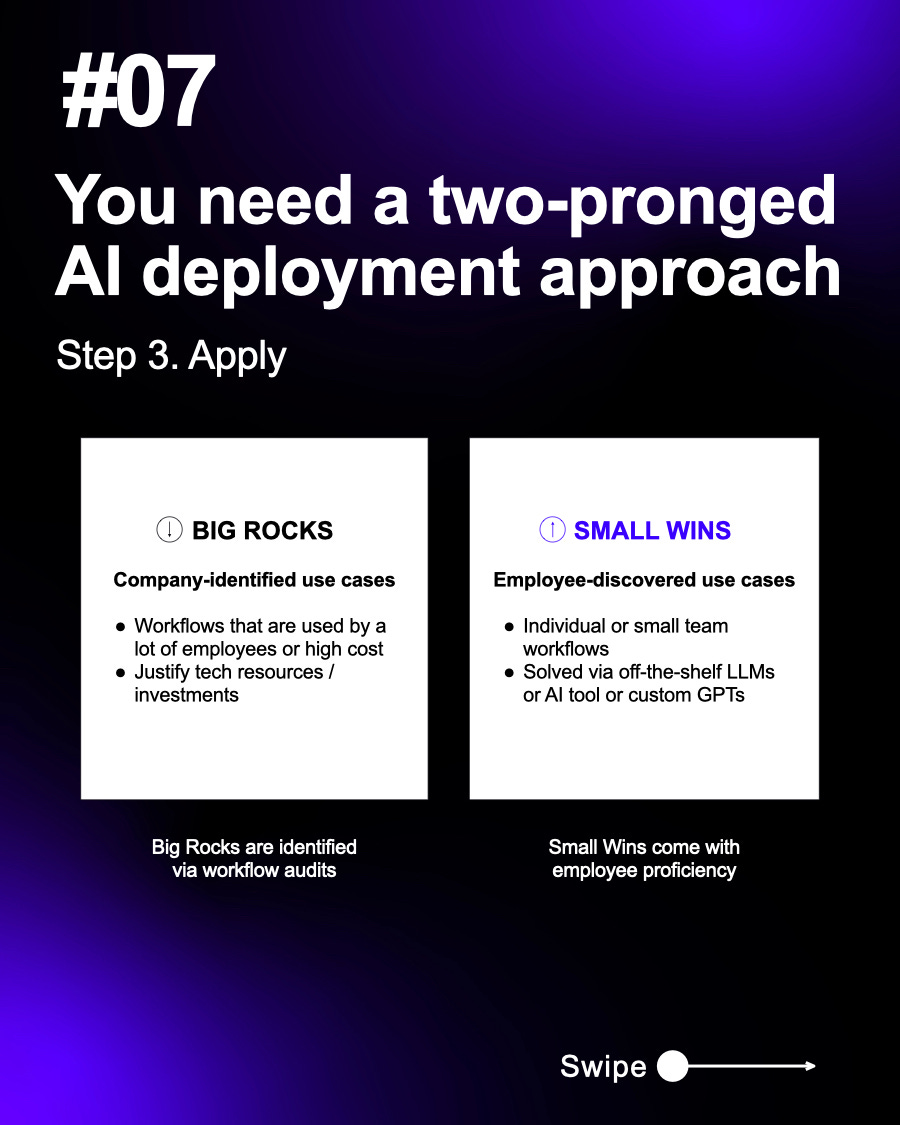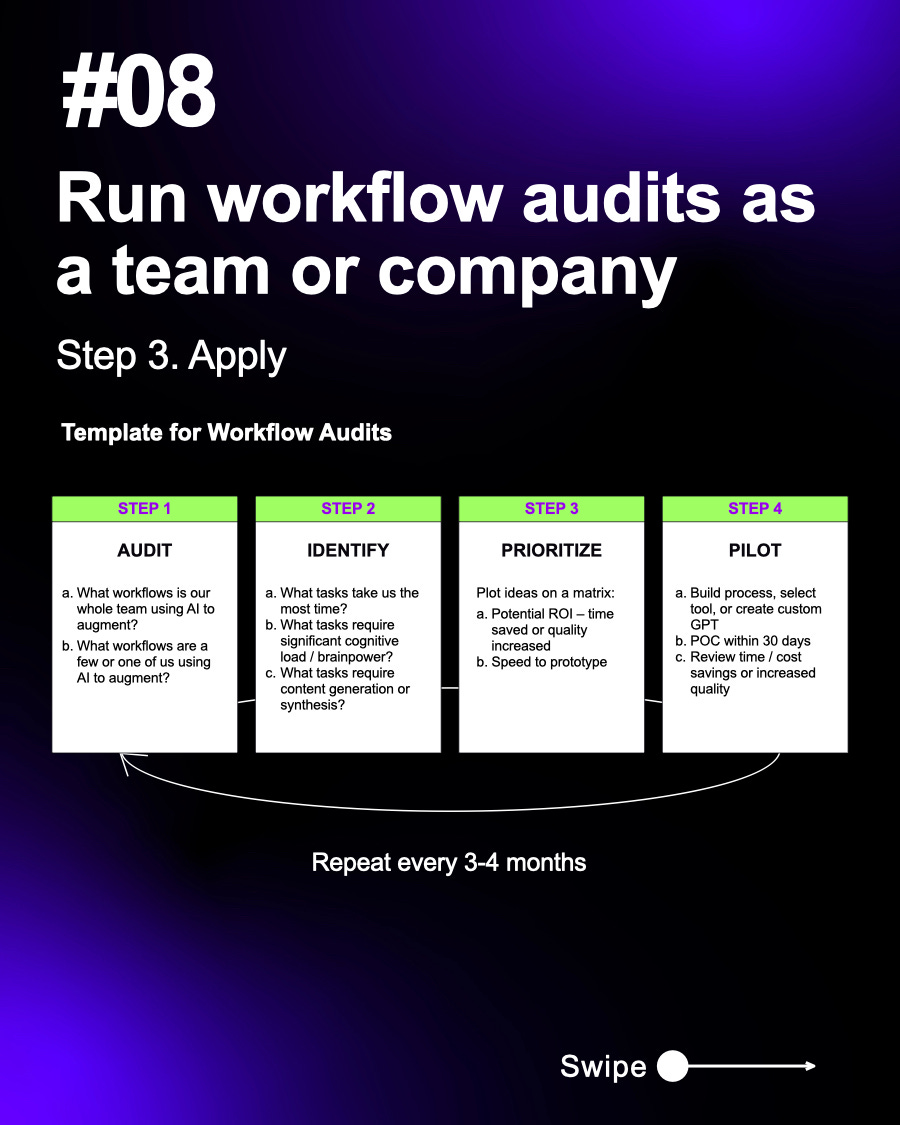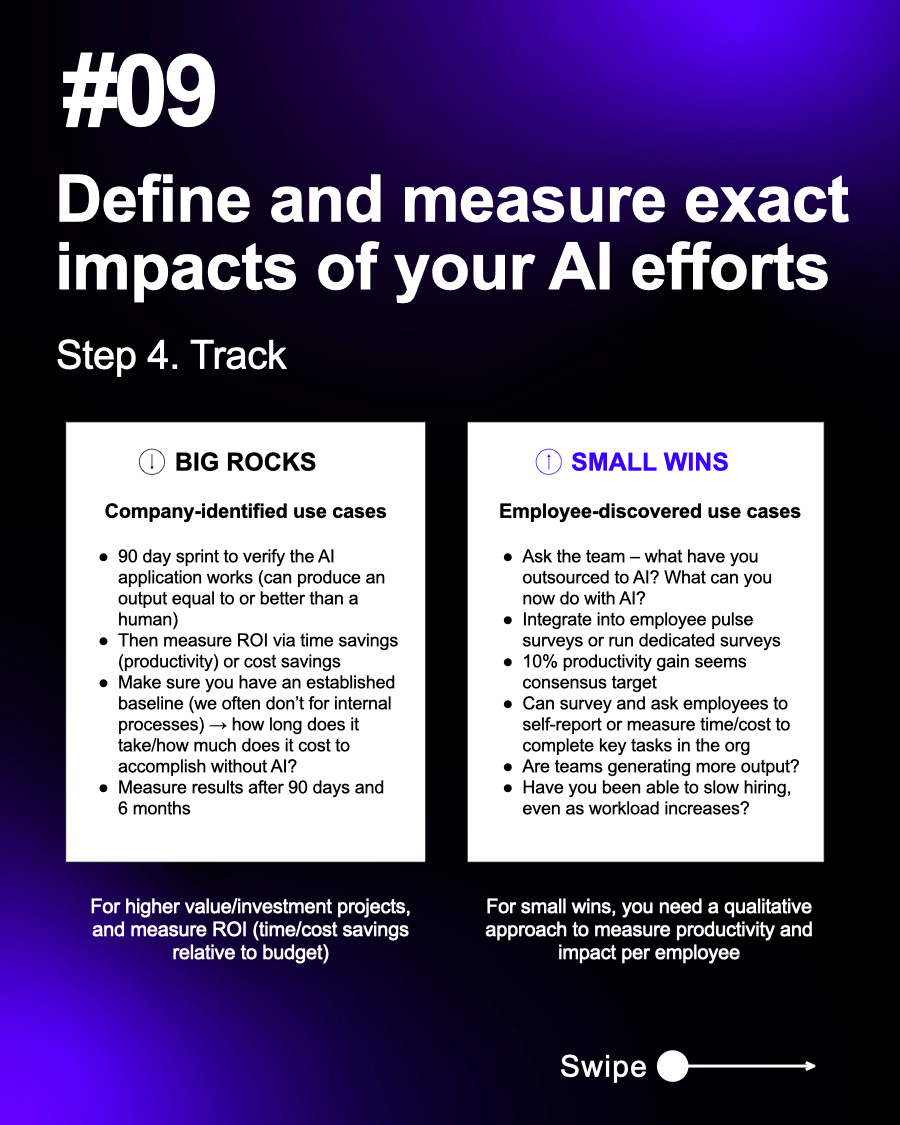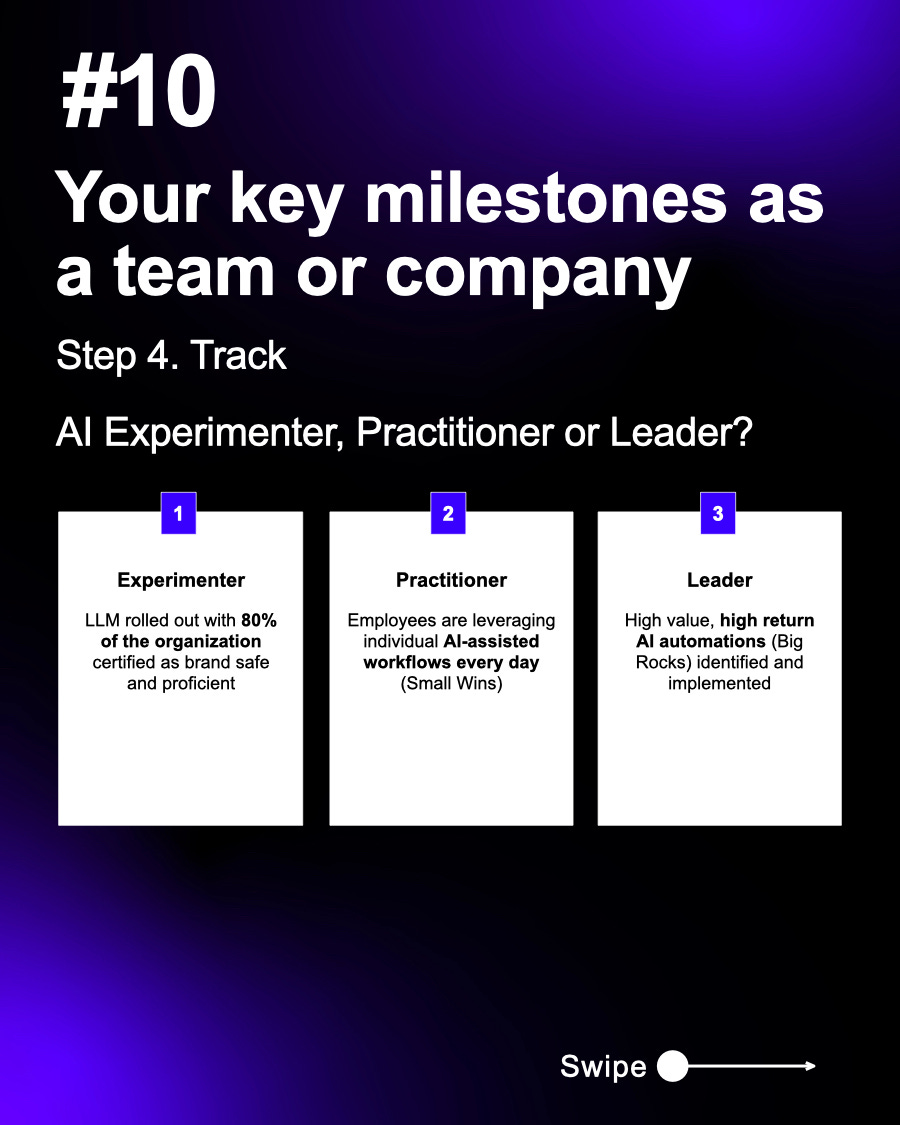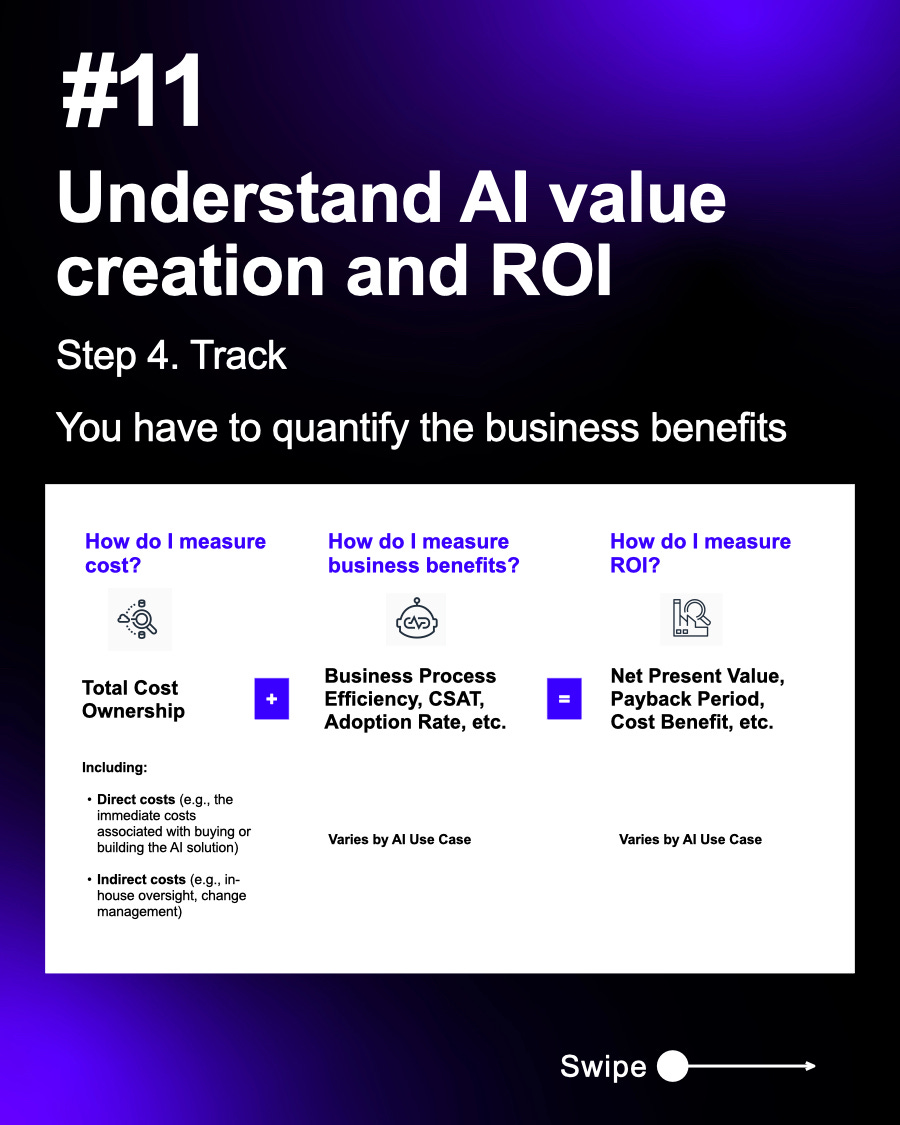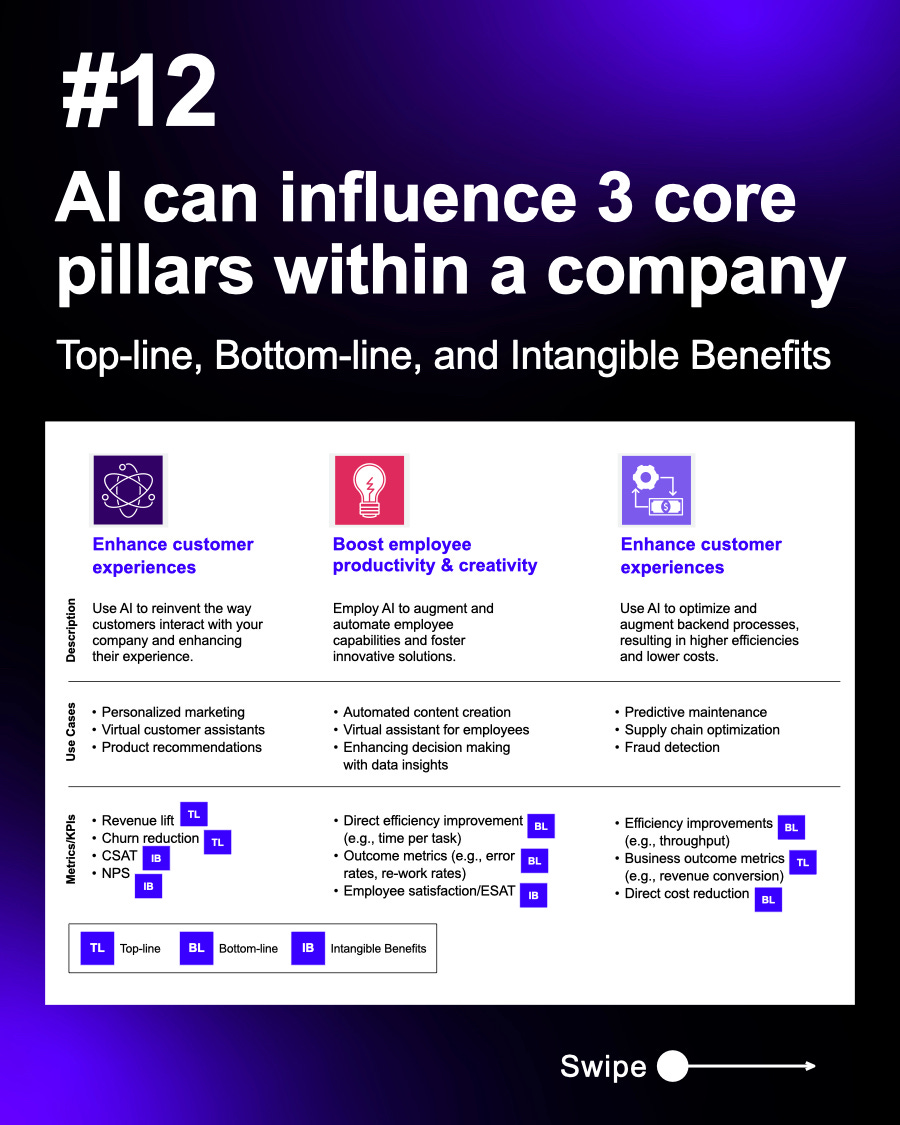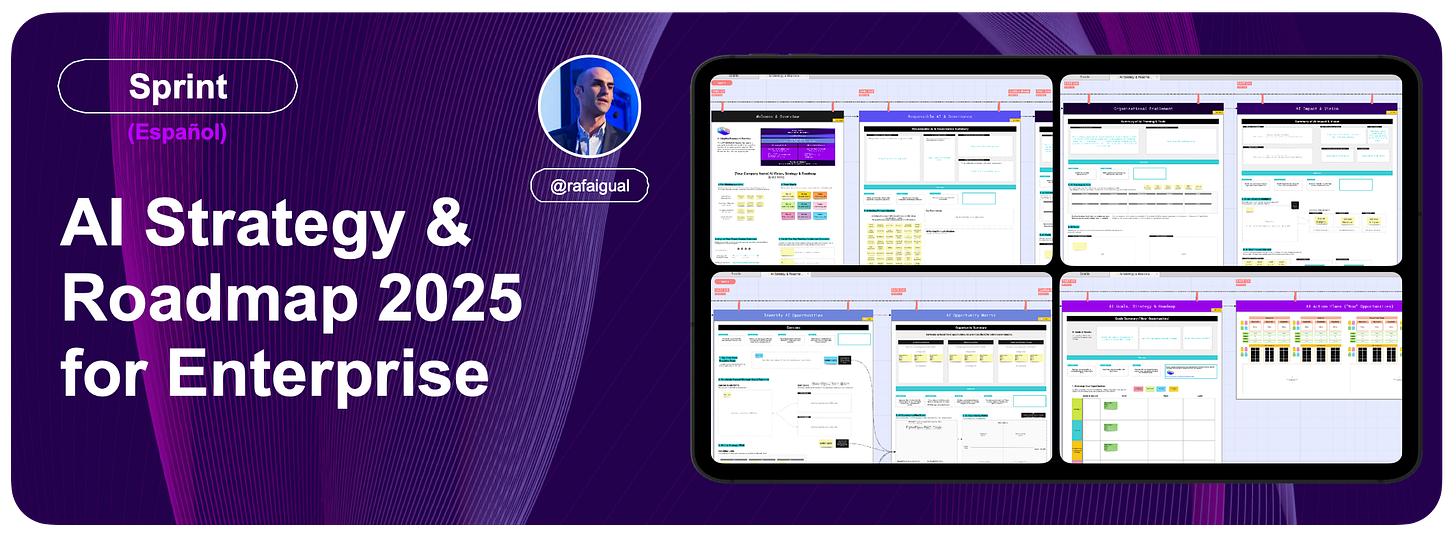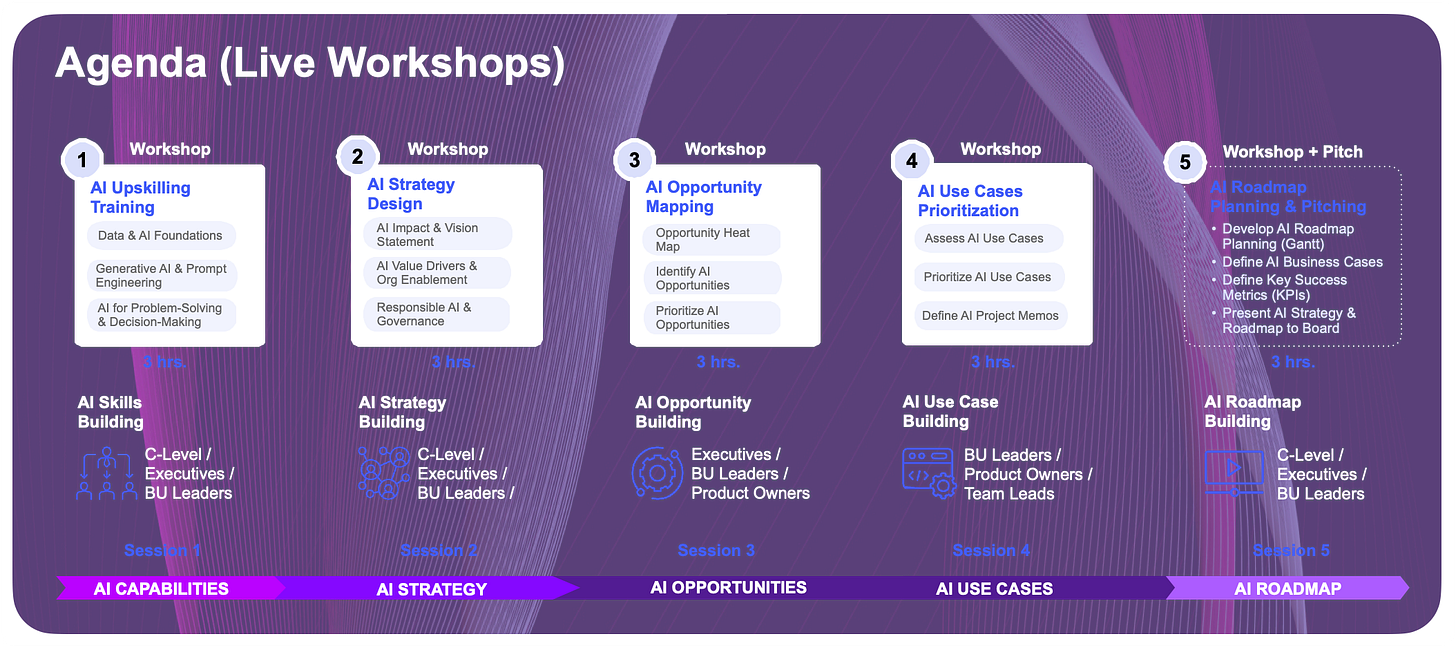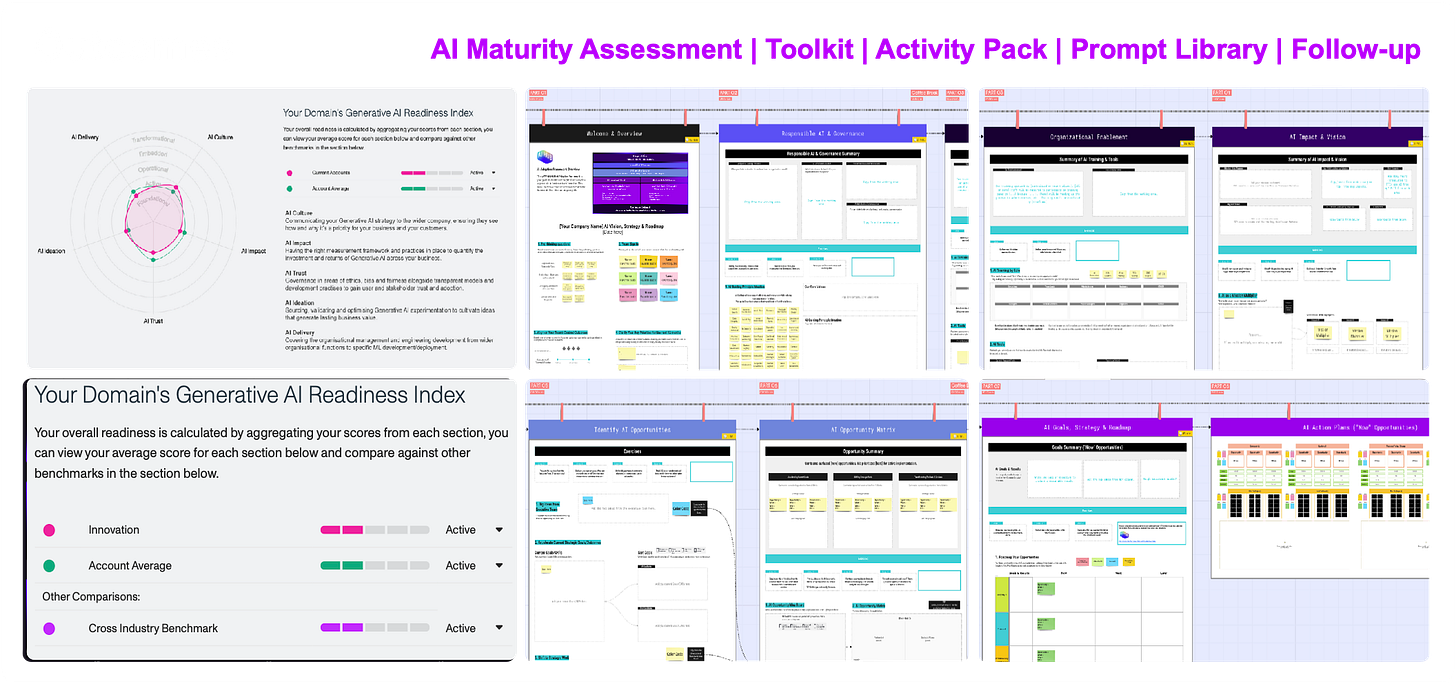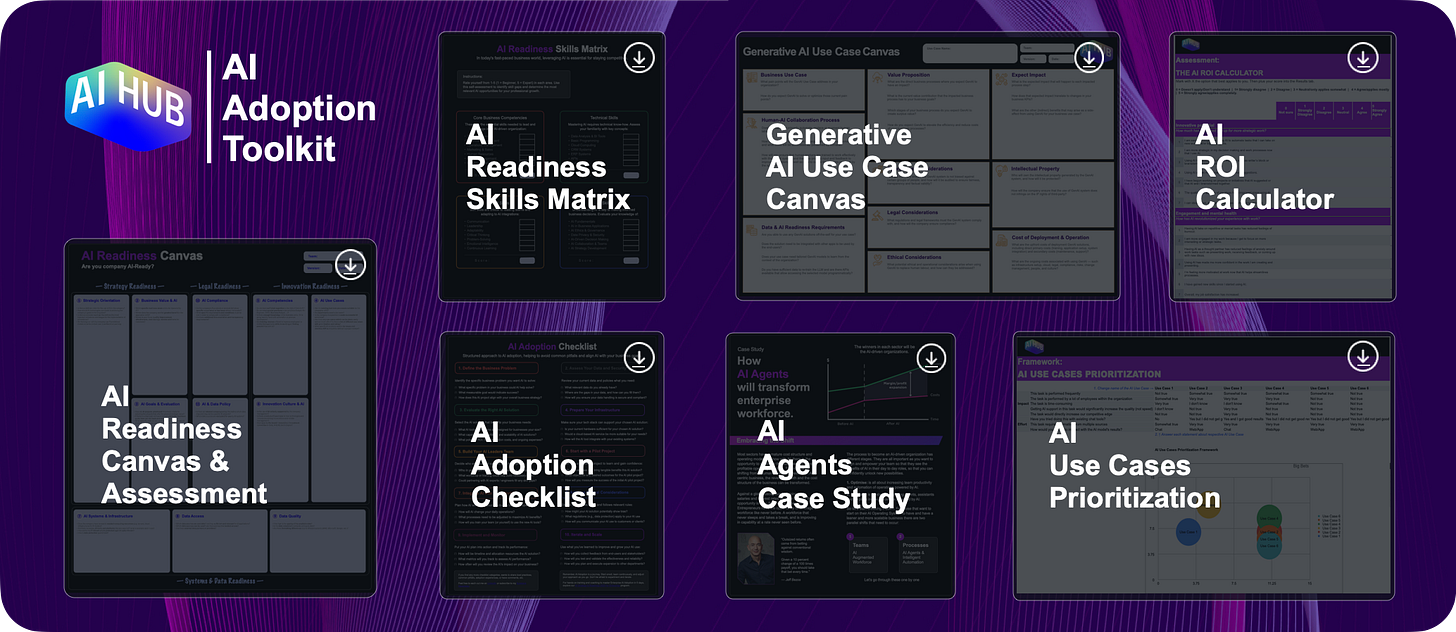From Strategy to Execution: Enterprise AI Deployment Playbook
Step-by-step framework encompassing preparation, training, application, and tracking, emphasizing the importance of both company-led and employee-driven AI initiatives.
Summary
This post outlining an enterprise AI deployment playbook, focusing on the strategic implementation of AI within organizations. Delves into crucial considerations, including AI talent, technology infrastructure, and risk management, while highlighting the need for quantifying business benefits through various metrics and measuring ROI to ensure successful adoption and realization of tangible outcomes. Advice for a multi-pronged approach that includes "Big Rocks" and "Small Wins" strategies to drive AI adoption, ultimately enabling organizations to harness the power of AI to enhance customer experiences, boost employee productivity, and optimize business processes.
1. Introduction
Assessing Your Organization's AI Journey: This section presents four scenarios representing different stages of AI adoption within an organization: evaluating, preparing, experimenting, and deploying. It prompts readers to identify their organization's current position on this journey.
Beyond Technology: This section highlights that while technology is crucial, factors such as data management, strategy, risk and governance, and talent are equally important for successful AI deployment.
2. The AI Deployment Lifecycle
Prep: Build leadership, measure baseline, identify AI champions.
Train: Educate the team on AI capabilities, limitations, responsible usage, and company-specific guidelines.
Apply: Conduct workflow audits to identify AI use cases (both Big Rocks and Small Wins), prioritize based on potential ROI and speed to prototype, then pilot and iterate.
Track: Monitor AI adoption, measure success based on predefined metrics, and adapt the strategy accordingly.
Step 1: Prep
Defining Roles for AI Success: This section details the specific roles and responsibilities of key individuals in the AI leadership team, including the AI Executive Sponsor, CTO, and AI Team Lead.
Step 2: Train
The AI Proficiency Journey: This section presents a four-step process for developing AI proficiency within the organization: certifying brand-safe AI usage, building foundational AI knowledge, making AI relevant to employees' roles, and providing ongoing support and training.
Tailored AI Training: This section advocates for functional AI training, which helps employees understand how AI can be applied within their specific roles and workflows.
Step 3: Apply
Moving Beyond Pilots: This section highlights the challenge of transitioning AI experiments from pilot phases to full deployment and emphasizes the need for strategic approaches to overcome this hurdle.
Balancing 'Big Rocks' and 'Small Wins': This section proposes a two-pronged approach to AI deployment, focusing on both company-identified "Big Rock" use cases (high impact but resource-intensive) and employee-discovered "Small Win" use cases (individual or team-specific workflows).
Workflow Audits for AI Application: This section provides a detailed template for conducting workflow audits to identify potential AI use cases. This template includes steps for auditing existing workflows, identifying time-consuming and cognitively demanding tasks, prioritizing potential AI applications based on ROI and speed to prototype, and piloting selected AI solutions.
Step 4: Track
Measuring Impact of AI Initiatives: This section distinguishes between measuring the impact of "Big Rocks" (focused on ROI and cost/time savings) and "Small Wins" (qualitative assessment of productivity and employee impact).
Milestones on the AI Journey: This section outlines key milestones for organizations at different stages of AI adoption: Experimenter (widespread AI rollout with certified users), Practitioner (daily individual AI utilization), and Leader (implementation of high-value AI automations).
Quantifying AI Value Creation: This section emphasizes the importance of quantifying business benefits in terms of total cost ownership, business process efficiency, customer satisfaction, adoption rate, and ultimately, calculating net present value, payback period, and cost-benefit ratio.
Impact on Core Business Pillars: This section explores how AI can impact three core areas within a company: optimizing business processes, enhancing customer experiences, and boosting employee productivity and creativity. It provides examples of use cases, metrics, and KPIs for each area.
3. AI Deployment FAQs
a) What are the stages of AI deployment in an enterprise?
The enterprise AI deployment lifecycle consists of four key steps:
Prep: Establish an AI leadership team, define a baseline, and identify AI champions within the organization.
Train: Conduct comprehensive AI training for your team. This includes ensuring safe AI usage, building fundamental AI proficiency, tailoring training to individual roles, and providing continuous support.
Apply: Audit existing workflows to pinpoint AI use cases. Prioritize these use cases based on potential ROI and speed to prototype.
Track: Continuously monitor and measure the impact of AI adoption. Track metrics such as productivity gains, cost savings, and improvements in customer satisfaction.
b) What's the most common roadblock to enterprise AI adoption?
Contrary to popular belief, the main barrier to AI adoption isn't technology. Organizations often face challenges in areas like data management, strategy and governance, talent acquisition and development, and establishing a clear AI strategy.
c) What are the two key approaches to AI deployment?
Top-down: This strategy starts with leadership mandating and sponsoring AI adoption throughout the organization.
Bottom-up: This approach begins with enthusiastic early adopters and gradually gains momentum, eventually influencing managers and leaders.
d) How do you identify and prioritize AI use cases?
Workflow Audits: Conduct regular team or company-wide audits to identify workflows where AI can add value. Focus on tasks that are time-consuming, require significant cognitive effort, or involve content generation.
Prioritization Matrix: Evaluate potential AI use cases based on factors like potential ROI (time savings, quality increases) and speed to prototype. This matrix aids in prioritizing projects that offer quick wins and significant returns.
e) What are 'Big Rocks' and 'Small Wins' in AI deployment?
Big Rocks: These are company-identified AI use cases that address workflows used by a large number of employees or those with high costs. They often require dedicated tech resources and investments.
Small Wins: These are employee-discovered use cases that target individual or small team workflows. They are typically addressed using readily available AI tools or custom-built GPTs.
f) How do you measure the impact of AI initiatives?
Big Rocks: Establish a clear baseline to understand the time and cost involved in completing a task without AI. Then, measure ROI in terms of time savings, cost reductions, or other relevant metrics after a defined period (e.g., 90 days, six months).
Small Wins: Take a qualitative approach by gathering employee feedback on AI's impact on their work. This can be done through surveys, interviews, or self-reported productivity gains. Focus on metrics like increased output, slowed hiring despite increased workload, and overall employee satisfaction.
g) What are the key milestones in an organization's AI journey?
Experimenter: The organization successfully rolls out LLMs, achieving 80% certification in brand-safe and proficient usage.
Practitioner: Employees regularly leverage AI in their individual workflows, demonstrating the successful integration of "Small Wins."
Leader: The organization identifies and implements high-value, high-return AI automations, signifying the effective execution of "Big Rock" projects.
h) How does AI contribute to value creation for business?
AI creates value by influencing three core areas:
Top-line: Enhances customer experiences through personalized marketing, virtual assistants, and product recommendations, leading to increased revenue and reduced churn.
Bottom-line: Optimizes business processes, such as predictive maintenance, supply chain optimization, and fraud detection, leading to increased efficiency and reduced costs.
Intangible Benefits: Boosts employee productivity and creativity by automating tasks, providing data insights, and fostering innovative solutions, contributing to improved employee satisfaction and overall business agility.
Your Turn: time to act is now
If you are not at a level of Enterprise AI adoption maturity that guarantees results and financial impact, I recommend accelerating the process for the sake of your company's bottom line (EBITDA), and at the same time:
You guarantee the payment of the annual bonus if you are CXO / Executive / Business Unit Leader / Product Owner / Team Lead of a Corporation.
You guarantee sufficient cash-flow to invest in product innovation, customer experience or market expansion if you are Business Owner / Director of an SME.
You guarantee to raise a round of venture capital (or debt) and ensure 24-36 months of runway to accelerate PMF / Growth Strategy if you are Co-Founder of a Startup.
You are probably in the process of (or have just completed) the 2025 strategic planning and budgeting process. The question is whether you have the approach, framework, and tools necessary to build the solid foundations of your Enterprise AI adoption strategy and roadmap for 2025. If you need help achieving impact and results with your AI initiatives, I suggest you take a look at my program AI Strategy & Roadmap 2025 for Enterprise.
To encourage you in your decision, I am giving you my AI Adoption Toolkit for (future) AI Leaders (CAIOs) as I hope is your case. I would like to know your assessment and experience if you put the tools in the AI Adoption Toolkit into practice… quid pro quo.
If you need help and want to talk about your case, I'll leave you my Cal so you can book a 1:1 Free Discovery Call with no obligation.
Tempus Fugit!
Founding Partner
LATAM AI HUB Ventures


